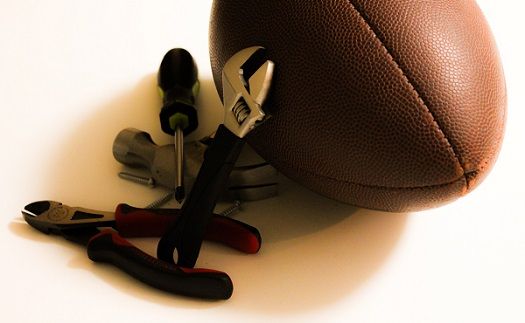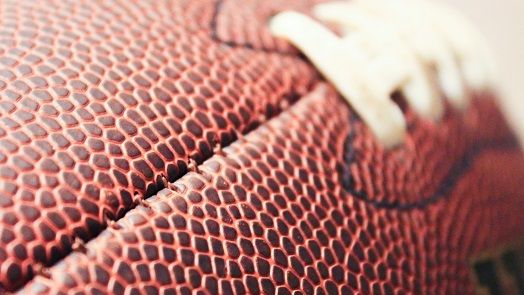Article
Fixing Football: Do Youth League Safety Efforts Work?
Author(s):
NFL-related organizations are looking to stymie the drop in youth participation.

Only one of the 20 most-watched television broadcasts in United States history was not a football game: the feature-length series finale of M*A*S*H* in 1983 sits eighth on the list. The rest are all Super Bowls, and Alan Alda and co. will likely be pushed down to ninth this weekend as Americans huddle up for the 51st edition of the National Football League's marquee game.
Football remains a dominant cultural touchstone, though ratings for the NFL's regular season have slipped slightly of late. Theories as to why vary. Some blame a decline in overall broadcast TV viewership, others cite player protests, mediocre games, and most gravely, growing public concern over concussions.
Brain injury concens are likely the greatest threat to the sport’s longevity, given the impact they may be having on the player pipeline. Without players, there is no game, and it is becoming increasingly difficult to keep rosters full amidst revelations of the sport's longterm health effects.
While tackle football is still played by millions of American youths, recent reports show a thinning herd. Though there was a small uptick in children and adolescents aged 6 to 17 playing tackle football in the year 2015, participation declined nearly 18% overall between 2009 and 2014, and was down 20% in children between the ages of 6 and 12. Surveys report that fewer and fewer parents feel comfortable allowing their children to play the game, in light of the ever-deepening revelations about football’s potential impact on long-term mental health.
The NFL has a vested interest in stemming that tide. In 2002 it endowed U.S.A. Football, a governing body for amateur football that promotes participation and standardized techniques and rules, and has since given it tens of millions of dollars. U.S.A. Football is now in the position of having to find ways to decrease risk, and the perception of it.
A program called Heads Up Football, championed by the organization and the NFL alike, has been sold to thousands of youth leagues and teams in hopes of teaching safer tackling techniques to the athletes and evaluation standards to their coaches. The importance of such efforts was underscored by a recent Centers for Disease Control and Prevention report on the frequency of football-related fatalities at the high school level.
In 2015, an organization-commissioned report on the Heads Up Football’s efficacy seemed to show it successful, with the preliminary results glowingly reported: in a study that covered over 2,000 youths in six leagues that used the standards and four that did not, it linked the program with a 76% reduction in injuries and a 30% drop in concussions.
The study itself, when later published in The Orthopaedic Journal of Sports Medicine, did not corroborate those early claims, instead showing the injury reductions came overwhelmingly from leagues that were members of the Pop Warner Football organization, which had put in place its own new tackling rules that were not included in the Heads Up curriculum.
“Leagues that used Heads Up Football alone actually saw slightly higher concussion rates, although that uptick was not statistically significant,” wrote The New York Times, “The previously reported drops were clearly driven by a league’s affiliation with Pop Warner, not Heads Up Football.” Non-concussion injuries in the Heads Up leagues did drop by 45%, not to the extent reported, with most of those numbers coming from safer practices.

That New York Times article went on to find other discrepancies in the way the commissioned research firm, Datalys, reported findings to the NFL and U.S.A. Football, as opposed to how the findings actually appeared in scientific journals. The injury designation “Nervous System (stinger)” in the journal report was changed to “Wind Knocked Out” in U.S.A. Football materials, for example.U.S.A. Football held an annual meeting last week in Orlando to discuss program development, coaching techniques, and the furtherance of its safety efforts. The organization is tuning up a modified youth version of the game, reducing field size and players per side to somewhere between six and nine. Kickoffs and punts would be removed, both of which contributed an outsize role in the number of fatalities listed in January’s CDC report as compared to their frequency within a game.
“By bringing the field in, first of all, I think there’s better form tackling because less speed, less momentum, more one-on-one tackling,” the Times quotes youth coach Chuck Kyle, who piloted a form of the modified game. “I didn’t see as many pileups, because there’s seven people.”
Such modified versions of the sport have already gained traction at the high school level, but in those cases they’re typically the result of schools in declining towns being unable to fill a full football roster.
Other organizations, such as Practice Like Pros, acknowledge that there isn’t necessarily a “safe” version of football. The group advocates for tackle football to begin for children in the ninth grade, with flag football for all kids younger. A study of former NFL players published in 2015 in Neurology showed greater cognitive impairment in players who participated in tackle football prior to age 12 than in those who didn’t.
Still, even if all these efforts prove successful, they call into question what the sport would look like a decade or two down the line, stocked with players who never tackled before they were teenagers, many of whom who cut their teeth playing against seven opponents rather than 11, having been taught to tackle in a restrained, modified style different from the way players in the past had. It remains to be seen how the gameplay would change, whether that new form would still satiate America’s hunger for it, and how much safer it could possibly be.
Related Coverage:
A Decade of Deaths: CDC Issues Report on Football Fatalities





